One Resume Does Not Fit All
Updating your resume with your most recent skills and achievements is an important step. But while it may feel like you’ve crafted the perfect document, sending the same version to every opportunity rarely works. Employers want to see how your specific background connects to the position they’re hiring for, and a generic resume doesn’t achieve that.
The Golden Rule: Customize Each Time
The most effective resumes are tailored to each role. This doesn’t mean rewriting from scratch, it means emphasizing the experiences, skills, and achievements that best match the job description. By aligning your resume with the responsibilities, qualifications, and requirements listed, you make it easier for hiring managers to quickly understand why you’re a strong candidate.
To make this process efficient, many professionals create several versions of their resume to use for similar roles. Each application only requires small adjustments rather than major rewrites. Another strategy is to maintain a “master resume” that includes everything, then pull and refine details from it when creating versions for individual opportunities. This method also helps you keep track of edits and ensures consistency across documents.
Getting Contact Information Right
It may seem like the simplest part of your resume, but contact information is one of the most common problem areas. Always use your full professional name, no nicknames, placeholders, or pseudonyms. A full mailing address is no longer necessary; for privacy and practicality, listing only your city, state, and zip code is enough. Phone numbers are critical, as recruiters often move quickly, and missing a call can cost you an opportunity. If you prefer not to share your personal number, a free service like Google Voice can provide a secure alternative. Finally, never use your current work email address. Always provide a professional personal email, and keep your job search separate from your current employment.
LinkedIn and Social Media
LinkedIn is an important tool for networking, but it doesn’t need to be on your resume. Sending hiring managers away from the document distracts from what you want them to focus on: your qualifications. Unless you are applying to a role that specifically requires a portfolio or project site, keep the attention on your resume itself. LinkedIn should support your search in the background, not replace the tailored application you’re sending in.
Employment Dates and Gaps
Clarity around employment dates is essential. Always include both the month and year for each role; exact days are unnecessary, but vague timelines raise red flags. If you have gaps in your employment history, don’t ignore them. Instead, acknowledge them with a brief note, such as “Sabbatical” or “Personal Leave,” and explain how you spent that time productively. Whether you were caring for family, traveling, or pursuing personal development, showing that the time had purpose helps employers see continuity rather than absence.
Crafting Strong Position Summaries
The descriptions under each role in your work history should do more than list responsibilities. Begin by explaining how you came into the role whether you were promoted internally or recruited for your expertise. Then, highlight key projects or initiatives, emphasizing both what you did and the impact it had on the organization. Recruiters also want to see management experience spelled out clearly, including the size of teams you supervised and the budgets you managed. Specifics here make it easier for hiring professionals to gauge the scope of your leadership and decision-making authority.
Grammar and Spelling
It may sound basic, but mistakes in spelling and grammar remain among the quickest ways to get a resume discarded. Errors signal carelessness and poor attention to detail, qualities no employer wants in a hire. For some companies, even a single typo can outweigh strong qualifications. Proofreading thoroughly, and even asking a trusted colleague to review your resume, can make the difference between being overlooked and being invited to interview.
Avoiding Age Bias
Experience is a tremendous asset, but resumes that reveal too much history can unintentionally highlight age. To avoid triggering bias, focus on the most recent 15 to 20 years of your career. Earlier roles can be summarized or left out entirely if they are not essential to your current goals. Similarly, omit graduation years from your education section and avoid including high school information altogether. The emphasis should remain on your relevant professional contributions, not on how long ago you entered the workforce.
Final Thoughts
Your resume is more than a record of where you’ve worked—it is a strategic tool to market yourself for the opportunities you want. By tailoring each version, keeping your information accurate and professional, and presenting your experience clearly and effectively, you create a stronger case for yourself as a candidate. With these adjustments, your resume becomes not just a history of your career, but a powerful document that opens the door to your next role.











